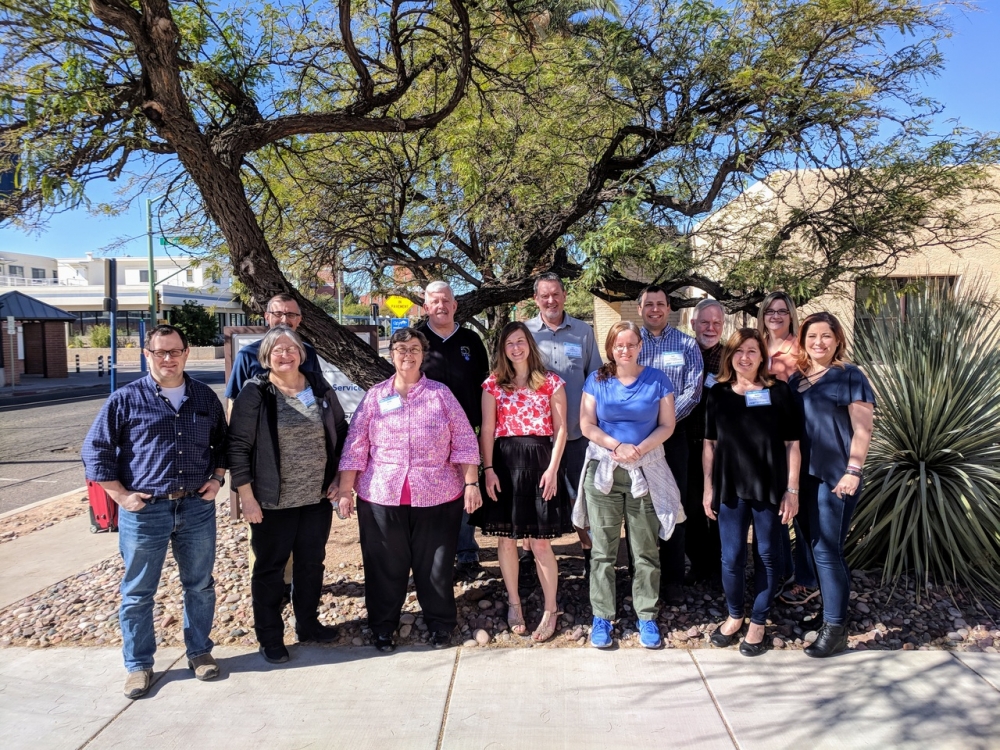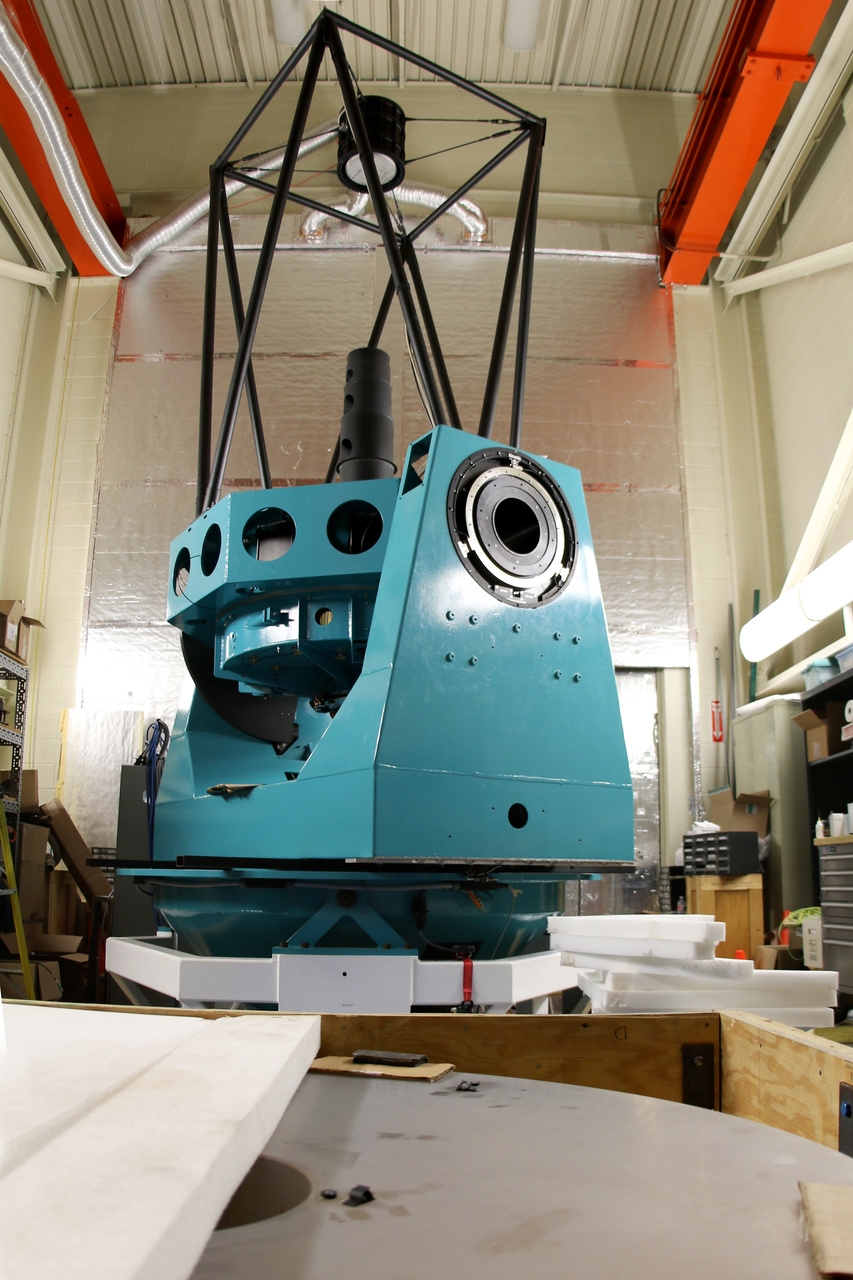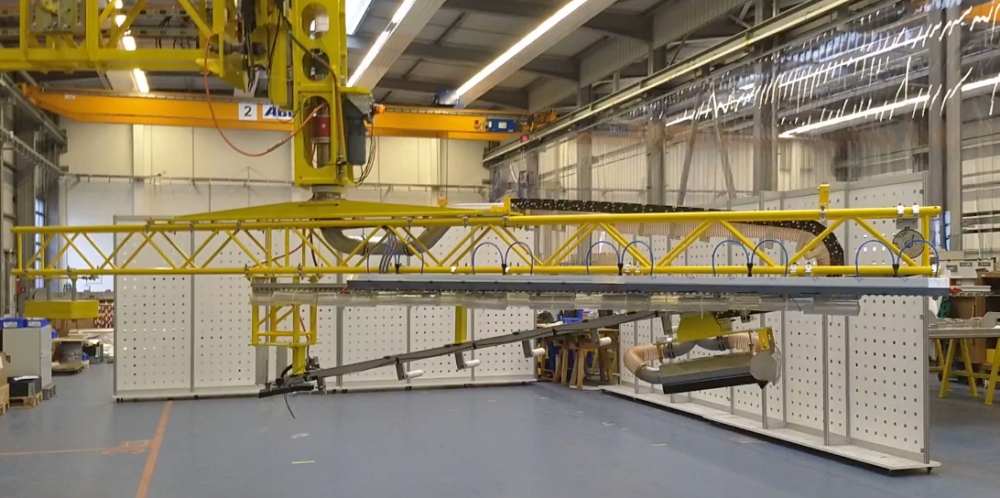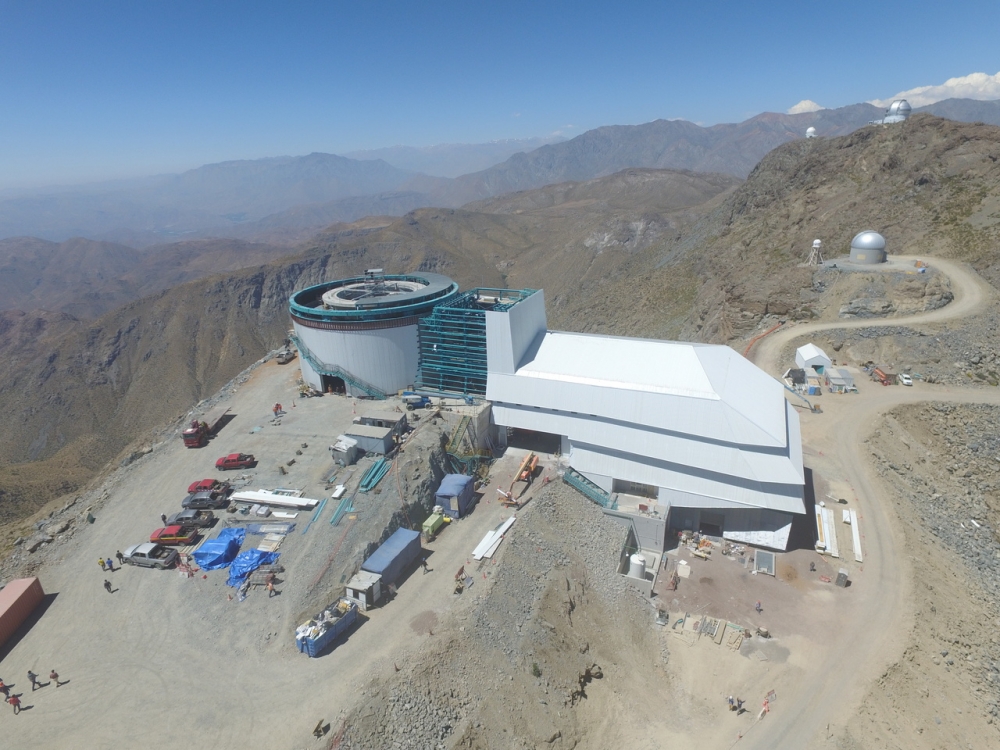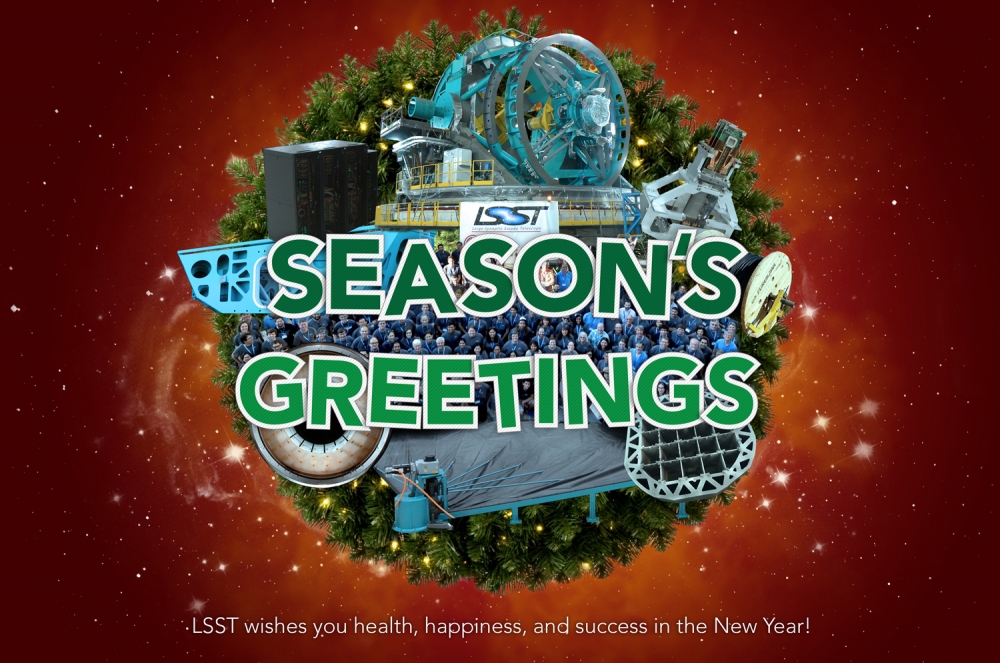A meeting of AURA’s Management Council for LSST (AMCL) took place in Tucson on January 29-30. The AMCL, which meets three times a year, is AURA’s oversight and advocacy committee for LSST. AURA President Matt Mountain was present along with LSST Senior Management for a productive agenda of presentations and discussions. The AMCL will meet again April 19-20 in Washington, DC.
The LSST Overview paper will be issued soon; to prepare for this, the Project Office has initiated verification of the “Builders List” in order to correctly credit and recognize the efforts of LSST team members.
LSST’s Auxiliary Telescope, which has been under refurbishment at the LSST Project Office in Tucson, will soon undergo functional testing of its mechanical and electrical systems. Read more about the Auxiliary Telescope and its role in the LSST survey in this recent news post.
The Dark Energy Science Collaboration (DESC) winter meeting was held at at SLAC on February 5-9. More than 170 participants attended the event, which included an opportunity to visit the LSST Camera clean room. The meeting kicked off with the 7th edition of Dark Energy School, a one-day interactive session designed to prepare new and existing DESC members for science with LSST.
The LSST Solar System Science Collaboration has assembled a science roadmap listing science priorities with LSST; the document is now available here.
Jim Bosch gave the latest in a series of Project Science Team talks for the Science Collaboration Chairs on January 30. His presentation, an overview of LSST Data Pipelines, was the first of six Data Management (DM) talks planned over the next few months. Slides from this presentation can be found on the LSST Scientists web page.
We are very sorry to announce the passing of Walt Innes on Monday, February 5. Walt was a crucial member of the LSST Camera team at SLAC, contributing invaluably to a number of aspects of the system. Walt had a long career at SLAC as an instrumental physicist; prior to joining the LSST project, he played a key role on BaBar and other particle physics projects. Walt will be fondly remembered and sorely missed.
PERSONNEL NEWS
Claudia Araya Salvo joined the Education & Public Outreach subsystem as EPO Chile Coordinator on February 5. Based in Santiago with regular travel to La Serena and Tucson, AZ, Claudia will be responsible for developing educational and other web-based materials in Spanish that are uniquely suited to the needs of Chilean educators, informal science education facilities, and the general public.
Michael Rodriquez joined the Systems Engineering subsystem on February 12. In his role as Senior Systems Engineer, Michael will be responsible for development and oversight of verification plans and test cases for system-level requirements and Interface Control Documents (ICDs) as well as assisting in acceptance of critical subsystems and other tasks as assigned.
UPCOMING MEETINGS with LSST INVOLVEMENT
(those with asterisk* are LSSTC funded):
2018
|
|
|
February 28-March 2
|
LSST Telescope & Site Subsystem Meeting, Tucson, AZ
|
|
March 5-9
|
LSST Systems Engineering/Data Management Joint Subsystem Meeting, Pasadena, CA
|
|
April 11-13
|
LSST Education & Public Outreach Subsystem Meeting, Tucson, AZ
|
|
April 16-18
|
LSSTC Congressional visits, Washington DC
|
|
April 18-20
|
Statistical Challenges for Large-scale Structure in the Era of LSST, Oxford, UK*
|
|
April 19-20
|
AMCL Meeting, Washington DC
|
|
June 10-15
|
SPIE Astronomical Telescopes and Instrumentation Meeting, Austin, TX
|
|
June 11-15
|
LSST@Europe3, Lyon, France*
|
|
June 19-21
|
Data Visualization and Exploration in the LSST Era, University of IL/NCSA, Champaign, IL*
|
|
August 13-17
|
LSST Project and Community Workshop 2018, Tucson, AZ
|
Noticias del Proyecto & Científicas
Una reunión del Consejo de Administración AURA para LSST (AMCL) tomo lugar en Tucson en enero 29-30. La AMCL, que se reúne tres veces al año, es el comité de AURA de apoyo y supervisión de LSST. El Presidente de AURA Matt Mountain estuvo presente junto con la alta gerencia de LSST para una productiva agenda de presentaciones y discusiones. La AMCL se reunirá de nuevo el 19 y 20 de abril en Washington, DC.
El documento general de LSST será publicado pronto, para prepararse para esto, la Oficina del Proyecto ha iniciado la verificación de las "Builders List" con el fin de dar crédito correctamente y reconocer los esfuerzos de los miembros del equipo LSST.
El Telescopio Auxiliar de LSST, que se ha estado remodelando en la oficina del proyecto de LSST en Tucson, pronto se someterá a la prueba funcional de sus sistemas eléctricos y mecánicos. Lea más sobre el telescopio auxiliar y su papel en la estudio de LSST en este reciente news post.
La reunión de invierno de la Colaboración Científica de la Energía Oscura (DESC) tomo lugar en SLAC el 5-9 de febrero. Más de 170 participantes asistieron al evento, que incluyó una visita a la sala limpia de la Cámara de LSST. La reunión arrancó con la séptima edición de la Escuela de Energía Oscura, una sesión interactiva de un día diseñada para preparar nuevos y existentes miembros de DESC para la ciencia con LSST.
La Colaboración de Ciencia del Sistema Solar LSST ha reunido una hoja de ruta científica con un listado de prioridades con LSST; el documento ya está disponible aquí here.
Jim Bosch dio la última de una serie de charlas del Equipo Científico del Proyecto para la Presidencia de la Colaboración Científica el 30 de enero. Su presentación, un resumen de los Ductos de Datos de LSST, fue el primero de seis charlas de Data Management (DM) previstas durante los próximos meses. Las diapositivas de esta presentación pueden encontrarse en el LSST Scientists web page.
Sentimos anunciar el fallecimiento de Walt Innes, el lunes 5 de febrero. Walt era un miembro fundamental del equipo de cámara LSST en SLAC, contribuyendo invaluablemente a varios aspectos del sistema. Walt tuvo una larga carrera en SLAC como físico instrumental; antes de unirse al proyecto LSST, desempeñó un papel clave en BaBar y otros proyectos de física de partículas. Walt será recordado y lo echaremos mucho de menos.
Noticias de personal
Claudia Araya Salvo se unió al subsistema de Educación y Divulgación Pública como coordinador de EPO en Chile el 5 de febrero. Basada en Santiago con viajes regulares a La Serena y Tucson, AZ, Claudia será responsable del desarrollo educativo basado en web y otros materiales en español que son especialmente adaptados a las necesidades de educadores chilenos, instalaciones educativas informales de científicas, y el público en general.
Michael Rodríguez se unió al subsistema de Ingeniería de Sistemas el 12 de febrero. En su función como Ingeniero de Sistemas Senior, Michael será responsable del desarrollo y supervisión de planes y casos de prueba de verificación de requisitos de nivel de sistema y documentos de control de interfaz (ICDs), así como ayudar en la aceptación de los subsistemas críticos y otras tareas asignadas.
Próximas reuniones con participación de LSST
(aquellos con un asterisco* son financiados por LSSTC):
2018
|
|
|
Febrero28-Marzo 2
|
Reunión del Subsistemade LSSTTelescopio & Sitio, Tucson, AZ
|
|
Marzo 5-9
|
Reunión de Subsistema en Conjunto deLSST Ingeniería de Sistemas/Gestión de Datos, Pasadena, CA
|
|
Abril 11-13
|
Reunión del Subsistema deLSST de Educación y DifusiónPública, Tucson, AZ
|
|
Abril 16-18
|
Visitas del Congresode LSSTC, Washington, D.C.
|
|
Abril18-20
|
Desafíos Estadísticos de la Estructura a Gran Escala en la Era de LSST, Oxford, UK*
|
|
Abril 19-20
|
ReuniónAMCL, Washington, D.C.
|
|
Junio 10-15
|
SPIE Reunión de Telescopios e Instrumentación Astronómica, Austin, TX
|
|
Junio11-15
|
LSST@Europe3, Lyon, Francia*
|
|
Junio 19-21
|
Visualización de Datos y Exploración en la Épocade LSST, Universidad de IL/NCSA, Champaign, IL*
|
|
Agosto 13-17
|
Taller del Proyecto y Comunitario LSST2018, Tucson, AZ
|


